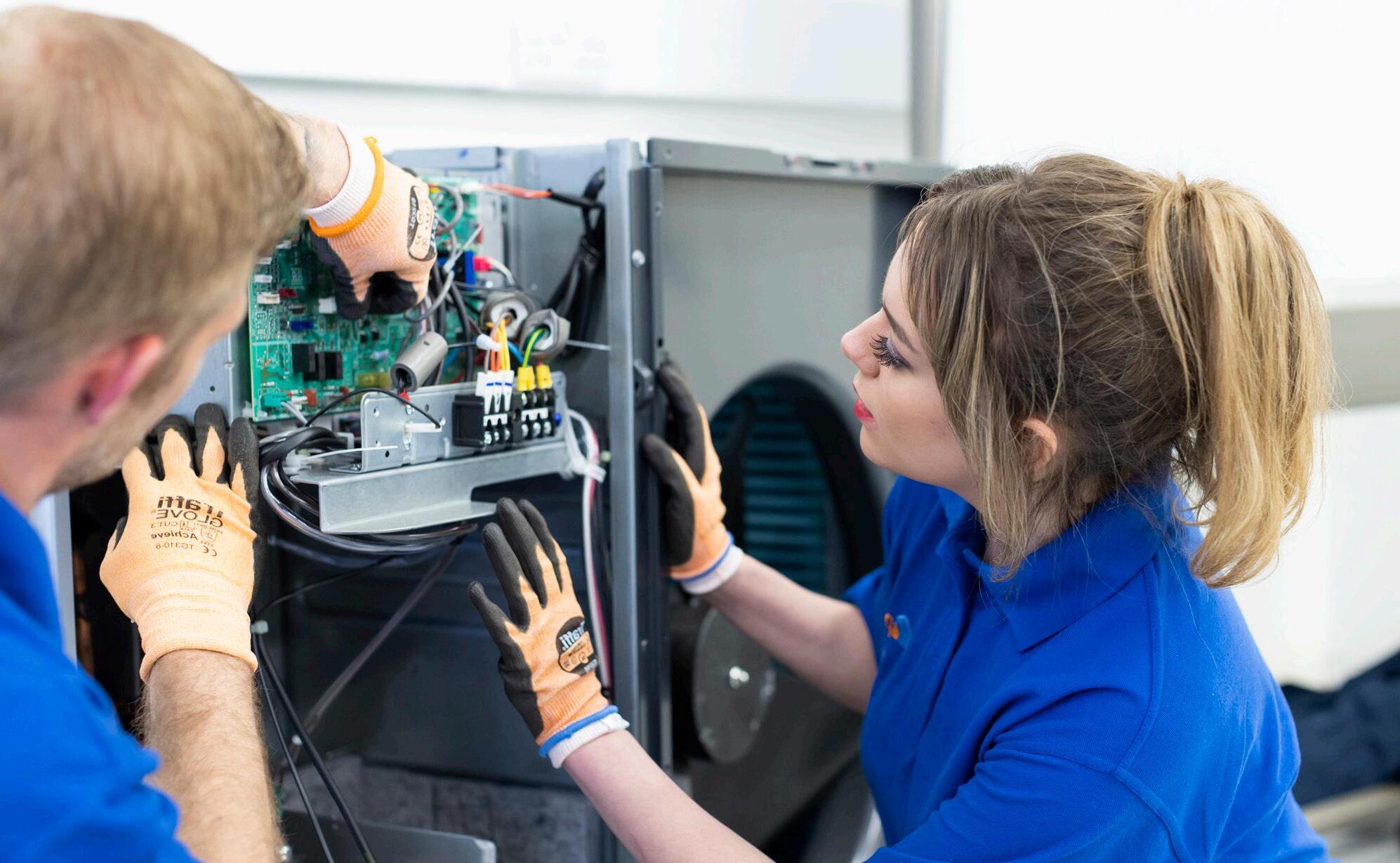
4 minute read
PH Jones: Shaping the Future of Social Housing
by Chelsea Bailey
The social housing sector is focusing on advancing digital services and investing in technologies, so residents who need the most support will be at the heart of what they do. How is PH Jones, part of British Gas, shaping the future of social housing?
Advertisement
PH Jones supports the move towards net zero, using lowcarbon solutions across its entire services, including specification, procurement, servicing and repair.
Technology can tell if someone is struggling to pay their energy bills
Housing Industry Leaders spoke to Ian Mather, National Renewables Strategic BDM at PH Jones about how he is focusing on supporting social housing providers and their residents on the journey to net zero.
“Technology can provide all sorts of data points and information. That could be something as simple as how efficient a heating system is or how much energy is generated by a generation system.” It is these technologies, Ian explained, that will help benefit the social housing sector.
In addition to this, technology can flag up the efficiency of a property and how well it is performing. This insight will help further understand the state of the property, such as the living conditions.
Giving an example, Ian expressed that you could install two properties identically, and from real-time data, you can identify signs: “If the heating utilisation is very low, and relative humidity is higher, it could indicate a welfare issue. Someone may be struggling to afford their energy bills.”
Though this may not necessarily mean that there is anything wrong with the system or the property, it could trigger a welfare check from the social housing provider, to go and have a conversation with the resident and see if any additional support is needed.
There is not one silver bullet technology to decarbonising housing
Another major benefit that technology can bring to the social housing sector is helping to tackle the difficult road to decarbonisation.
The UK has an aim to reach net zero by 2050. A report by the National Housing Federation has stated that the elimination of carbon emissions across all social housing has the potential to deliver “enormous benefits for residents, communities, the economy, and the environment”.
Ian Mather speaking at Housing Industry Leaders Cymru
Focusing on one technology is not practical and won’t deliver the results that we need for the residents of the country as a whole, we must explore multiple technologies.
Ian Mather National Renewables Strategic BDM PH Jones

Ian revealed that sustainable technology isn’t a new thing to PH Jones: “We installed around 1800 heat pumps about 15 years ago, so we’ve been doing this for some time. British Gas has got the largest energy company obligation of any of the energy companies. Therefore, we have been funding renewable measures for some time in the social housing sector.”
Through its work on renewable technologies, it has discovered that a technologyagnostic viewpoint is needed.
Ian stated that multiple technologies must be explored to meet net zero: “We recognise that there are lots of measures out there that support the transition to net zero. We’re fully supportive of the fabricfirst approach and believe it is absolutely the way to go. However, it is not a case of trying to shoehorn one technology into every archetype.”
To ensure that residents are provided with the necessary knowledge of what is needed to transition to net zero, PH Jones operate a consultative approach.
This helps it to understand its clients' needs, for clients to understand their residents’ needs, and presents the client with options and solutions to support the transition to net zero.
Ian said that providing this knowledge is crucial in planning for the future: “Meeting net zero is not something that we’re going to do overnight.
It is important that our clients not only understand what is available to them and how we can transition today, but we need to ensure they have a sight of the future, are able to plan, and make sure that their strategic approach to net zero can reflect the future.”
DSR can help to stagger energy demand
With the focus on renewable generation increasing, there is a need for increased system flexibility to balance the system.
The grid has a part to play in the decarbonisation journey.
DSR means demand side response or flexibility as it is also known. DSR enables certain household technologies to smooth the load on the grid by automatically adjusting their power demand.
In turn, this can actively save the residents money by taking advantage of lower rates when surplus energy is available and reducing usage when rates are higher. This technology also has the potential to generate revenue.
Examples of technologies that can be compatible with this system are house batteries, heat pumps, intelligent hot water cylinders, EV charging points, and storage heaters.

Explaining the importance of DSR, Ian expressed that: “The grid needs to remain at around 50 hertz in frequency. If it increases too much, they need to get rid of energy. If it decreases, they need to add additional generation. This can be costly and carbon-intensive.”
Continuing, Ian told Housing Industry Leaders that DSR plays an important role in the transition to a low-carbon energy system.
He said: “When it comes to charging, we can stagger the demand through the off-peak periods to make sure that we’re not having a massive peak of demand and then suddenly everything clicks off and there is a huge surplus of supply again.”

Going forward, Ian highlighted that PH Jones will continue to support the use of technology in social housing to ensure the sector is futureproofed: “The beauty of our business is that it is part of Centrica, so we can speak to our energy teams, our demand side response team, and HIVE, and through this we can share experiences, share knowledge, and make sure that we are ready for the future.”
To keep informed of future technologies, PH Jones has a research and development lab in Leicester attached to its academy. Its role is to test products, ensure that they do what manufacturers promise they do, but also look to the future to become more efficient.
The social housing sector must focus on advancing a variety of technologies to guarantee that providers truly fulfil their residents’ needs.

By sharing knowledge, supporting conferences, and talking about what we do, that is where I think we can make a real difference.
Ian Mather
National Renewables Strategic BDM
PH Jones










